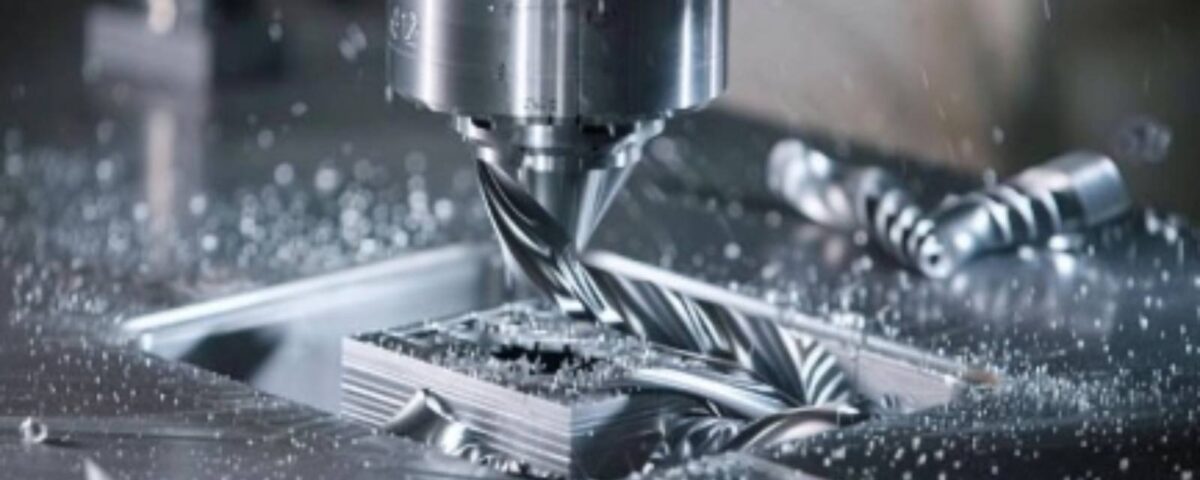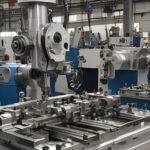
Unleashing the Power of China Precision Machining Parts
13 June 2024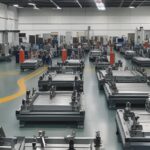
Specifications and Notes for Component Blueprints
19 June 2024For machining centers, cutting tools are consumable items that will become damaged, worn, and chipped during the machining process. These occurrences are inevitable, but there are also controllable factors, such as unscientific and irregular operation, as well as improper maintenance. By identifying the root cause, we can better address the issue.
Manifestations of tool damage
(1) Micro-chipping of the cutting edge
When the material structure, hardness, and allowance of the workpiece are uneven, a too large rake angle can lead to low cutting edge strength. Additionally, insufficient rigidity in the processing system can cause vibration, especially during intermittent cutting, resulting in poor grinding quality and making the cutting edge prone to micro-chipping, such as small chipping, notches, or peeling. When this occurs, the tool may lose some cutting ability but can still continue to work. However, continued cutting with a damaged cutting edge may lead to rapid expansion of the damaged area, causing even greater harm.
(2) Chipping of the cutting edge or tooltip
This type of damage usually occurs under more severe cutting conditions than those that cause micro-chipping of the cutting edge, or it can be a more advanced form of micro-chipping. The size and extent of the chipping are larger than micro-chipping, which causes the tool to completely lose its cutting ability and stop working. The chipping of the cutting tool is often referred to as tip drop.
(3) Blade or tool breakage
When the cutting conditions are extremely poor, the cutting amount is too large, there is an impact load, there are microcracks in the blade or tool material, there is residual stress in the blade due to welding and grinding, and the operation is careless, the blade or tool may break. Once this type of damage occurs, the tool cannot be used anymore and must be discarded.
(4) Blade surface peeling
For very brittle materials, such as cemented carbide with high TiC content, ceramics, PCBN, etc., due to defects or potential cracks in the surface structure or residual stress in the surface due to welding and grinding, it is very easy to cause surface peeling when the cutting process is not stable enough, or the tool surface is subjected to alternating contact stress. Peeling may occur on the front blade face and on the back blade face. The peeling material is flaky, and the peeling area is large. Coated tools are more likely to peel. After slight peeling, the blade can still continue to work, but it will lose its cutting ability after severe peeling.
(5) Plastic deformation of cutting parts
Tool steel and high-speed steel might experience plastic deformation in their cutting parts due to low strength and hardness. When cemented carbide is exposed to high temperatures and triaxial compressive stress, it can also undergo surface plastic flow and even lead to plastic deformation of the cutting edge or tooltip, causing it to collapse. This collapse usually happens when a large cutting amount is involved and hard materials are being processed. The elastic modulus of TiC-based cemented carbide is smaller than that of WC-based cemented carbide, which accelerates its susceptibility to plastic deformation or quick failure. PCD and PCBN generally do not undergo plastic deformation.
(6) Thermal cracking of the blade
During machining, the cutting tool is exposed to both mechanical and thermal loads. This leads to thermal stress caused by repeated expansion and contraction, resulting in fatigue and blade cracking. For instance, high-speed milling with a cemented carbide cutter subjects the teeth to periodic impact and thermal stress, leading to the formation of comb-shaped cracks on the cutting edge. Even without apparent alternating loads and stresses, thermal stress can still arise due to temperature differences between the surface and inner layers of the tool. Additionally, inherent material defects can also contribute to blade cracking. After the crack forms, the tool may continue working for some time, but sometimes the crack rapidly expands, leading to blade breakage or severe surface peeling.
Causes of tool wear
(1) Abrasive wear
There are often extremely hard tiny particles in the processed material that can scratch grooves on the tool's surface, causing abrasive wear. This type of wear can occur on all surfaces but is most noticeable on the front cutting edge. Additionally, abrasive wear can happen at all cutting speeds. However, for low-speed cutting, due to the low cutting temperature, wear caused by other factors may not be obvious, making abrasive wear the primary cause. Furthermore, the lower the hardness of the tool, the more severe the abrasive wear.
(2) Cold welding wear
During the cutting process, there is significant pressure and strong friction between the workpiece, the cutting tool, and the front and rear cutting edges. This leads to cold welding. The cold welds formed due to the relative movement between the friction pairs break and are carried away by one side, resulting in cold welding wear. Cold welding wear is particularly prominent at medium cutting speeds. Based on experiments, brittle metals exhibit stronger resistance to cold welding compared to plastic metals. Multiphase metals have less resistance to cold welding compared to unidirectional metals, and metal compounds have less tendency to cold weld compared to single elements. Additionally, elements in the B group of the chemical periodic table have less tendency to cold weld with iron. High-speed steel and cemented carbide experience more serious cold welding wear when cutting at low speeds.
(3) Diffusion wear
When cutting at high temperatures and during contact between the workpiece and the tool, the chemical elements from both materials mix with each other in a solid state. This changes the composition and structure of the tool, making its surface brittle and causing increased wear. The diffusion phenomenon always involves the continuous movement of elements from areas of high concentration to areas of low concentration.
When the temperature of cemented carbide reaches 800°C, the cobalt within it will quickly diffuse into the chips and die casting aluminum workpieces, and the WC will break down into tungsten and carbon, which will then diffuse into the steel. In the case of PCD tool cutting of steel and iron materials, when the cutting temperature exceeds 800°C, the carbon atoms in the PCD will transfer to the workpiece surface with high diffusion intensity, forming a new alloy and causing graphitization of the tool surface. Cobalt and tungsten diffuse more readily, while titanium, tantalum, and niobium possess stronger anti-diffusion properties, resulting in better wear resistance of YT cemented carbide. When cutting ceramics and PCBN at temperatures as high as 1000°C to 1300°C, diffusion wear is not significant. As the workpiece, chips, and tools all consist of the same material, a thermoelectric potential is generated in the contact area during cutting, which promotes diffusion and accelerates tool wear. This diffusion wear caused by the thermoelectric potential is termed "thermoelectric wear."
(4) Oxidation wear
When the temperature increases, the surface of the tool oxidizes, producing softer oxides. These oxides are then rubbed by the chips, resulting in oxidation wear. For instance, at 700°C to 800°C, the oxygen in the air reacts with cobalt, carbides, titanium carbides, and so on in cemented carbides to form softer oxides. At 1000°C, PCBN chemically reacts with water vapor.
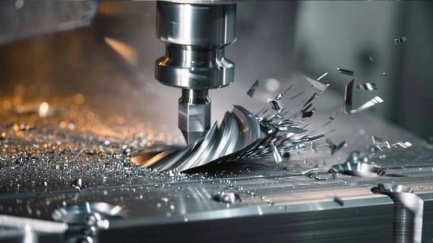
Wear forms of blades
(1) Rake face wear
When cutting plastic materials at high speed, the rake face area near the cutting force wears into a crescent shape due to the action of the chips. This type of wear is known as crescent wear. In the early stages of wear, the tool's rake angle increases, which improves cutting conditions and helps in curling and breaking the chips. However, as the crescent wear increases further, the cutting edge's strength is significantly reduced, which can eventually lead to breakage and damage of the cutting edge. Crescent wear generally does not occur when cutting brittle materials or when cutting plastic materials at lower speeds and thinner cutting thicknesses.
(2) Tool tip wear
Tooltip wear refers to the wear on the back face of the tooltip arc and the adjacent secondary back face. This wear is an extension of the wear on the back face of the tool. Due to poor heat dissipation conditions and stress concentration, the wear rate is faster than on the back face. In some cases, a series of small grooves with a spacing equal to the feed amount may form on the secondary back face, which is known as groove wear. Groove wear is mainly caused by the hardened layer and cutting lines on the machined surface. When cutting difficult-to-cut materials that have a strong tendency to harden, groove wear is most likely to occur. Tooltip wear significantly affects the surface roughness and machining accuracy of the workpiece.
(3) Flank wear
When cutting thick plastic materials, the tool flank may not make proper contact with the workpiece due to a built-up edge. This can cause wear on the flank of the tool. Typically, the wear is uniform along the middle of the cutting edge, and can be measured using the width VB of the wear band in this section.
Flank wear is common for all types of tools under different cutting conditions, particularly when cutting brittle or thin plastic materials. Measurement of the wear band width VB is a simple way to assess the tool wear. A larger VB indicates greater cutting force, leading to cutting vibrations. Wear on the tooltip arc can also impact machining accuracy and surface quality.
Methods to prevent tool breakage
(1) Based on the characteristics of the processed materials and parts, it is important to carefully select the appropriate materials and brands for various tools. The tool material should have a certain level of hardness and wear resistance while also possessing the necessary toughness.
(2) The proper selection of tool geometric parameters, such as adjusting the front and rear angles, the main and secondary deflection angles, the blade inclination angles, and other angles, ensures that the cutting edge and the tip have good strength. Grinding a negative chamfer on the cutting edge is an effective measure to prevent tool breakage.
(3) Ensure the quality of welding and grinding and avoid various defects caused by poor welding and grinding. The tools used in key processes should be ground to improve the surface quality and check for cracks.
(4) Reasonable selection of cutting parameters, avoiding excessive cutting force and high cutting temperature to prevent tool breakage.
(5) Ensure that the processing system has good rigidity and reduces vibration as much as possible.
(6) Take correct operating methods to minimize or minimize sudden loads on the tool.
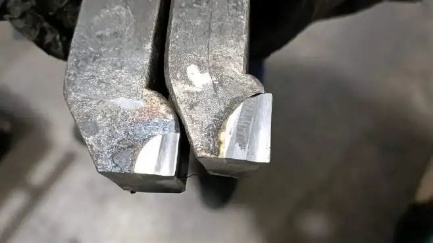
Causes and countermeasures of tool chipping
(1) Improper selection of blade brand and specification, such as the thickness of the blade needs to be thicker or a brand that is too hard and brittle, is selected for rough processing.
Countermeasures: Increase the thickness of the blade or install the blade vertically, and select a brand with higher bending strength and toughness.
(2) Improper selection of tool geometric parameters (such as too large front and rear angles, etc.).
Countermeasures: The tool can be redesigned in the following ways:
- Appropriately reduce the front and rear angles;
- Use a larger negative edge inclination angle;
- Reduce the main deflection angle;
- Use a larger negative chamfer or edge arc;
- Grind the transition cutting edge to strengthen the tooltip.
(3) The welding process of the blade is incorrect, resulting in excessive welding stress or welding cracks.
Countermeasures:
- Avoid using a blade slot structure with three sides closed;
- Select the correct solder;
- Avoid using oxyacetylene flame heating for welding, and keep warm after welding to eliminate internal stress;
- Use a mechanical clamping structure as much as possible.
(4) Improper grinding methods cause grinding stress and grinding cracks, as well as excessive vibration of the teeth of the PCBN milling cutter after grinding, which makes individual teeth overloaded and causes the cutter to break.
Countermeasures:
- Use intermittent grinding or diamond grinding wheel grinding;
- Use softer grinding wheels and regularly dress them to keep them sharp;
- Pay attention to the quality of grinding and strictly control the vibration of the CNC milling online cutter teeth.
(5) Unreasonable selection of cutting parameters, such as excessive usage, resulting in machine tool stalling; when cutting intermittently, the cutting speed is too high, the feed rate is too large, the blank allowance is uneven, and the cutting depth is too small; when cutting materials with a high tendency to work hardening such as high manganese steel, the feed rate is too low, etc.
Countermeasures: Reselect cutting parameters.
(6) Structural reasons such as uneven bottom surface of the groove of the mechanical clamping tool or excessive extension of the blade.
Countermeasures:
- Trim the bottom of the tool groove;
- Arrange the position of the cutting fluid nozzle reasonably;
- Harden the toolbar and add a carbide gasket under the blade.
(7) Excessive tool wear.
Countermeasures: Change the tool or the cutting edge in time.
(8) Insufficient cutting fluid flow or incorrect filling method causes the blade to heat up suddenly and crack.
Countermeasures:
- Increase the flow of cutting fluid;
- Arrange the position of the cutting fluid nozzle reasonably;
- Use effective cooling methods such as spray cooling to improve the cooling effect;
- Reduce the impact on the blade.
(9) Improper tool installation, such as the cut-off turning tool being installed too high or too low, the end mill using asymmetric down milling, etc.
Countermeasures: Reinstall the tool.
(10) The rigidity of the processing system is too poor, resulting in excessive cutting vibration.
Countermeasures:
- Increase the auxiliary support of the workpiece and improve the rigidity of the workpiece clamping;
- Reduce the overhang length of the tool;
- Appropriately reduce the back angle of the tool;
- Use other vibration reduction measures.
(11) Careless operation, such as when the tool cuts in from the middle of the workpiece, the action is too violent; the machine stops before the tool is retracted.
Countermeasures: Pay attention to the operation method.
Causes, characteristics, and control measures of built-up edge
(1) Causes
Close to the cutting edge, where the tool and the chip make contact, the metal of the chip's bottom layer is embedded in the microscopic uneven surfaces of the cutting edge due to the strong pressure. This creates a seamless metal-to-metal contact, resulting in a bonding effect. This contact area is called the bonding area. A thin layer of metal material is deposited on the front cutting edge of the chip's bottom layer in this bonding area. The metal undergoes significant deformation and becomes strengthened at the appropriate cutting temperature. As the chip continues to flow out, the accumulated material on the cutting edge slides relative to the upper layer of the chip and forms the basis of the built-up edge. Subsequently, a second layer of accumulated cutting material forms on top of it, and this continuous buildup creates a built-up edge.
(2) Characteristics and influence on the cutting process
1) The hardness is 1.5 to 2.0 times higher than that of the workpiece material. It can replace the front cutting edge for cutting, providing protection and reducing wear. However, when the built-up edge falls off, the fragments will flow through the contact area between the tool and the workpiece, causing wear on the back cutting edge of the tool.
2) After the built-up edge is formed, the working front angle of the tool increases significantly, which plays a positive role in reducing chip deformation and reducing cutting force;
3) Since the built-up edge protrudes beyond the cutting edge, the actual cutting depth increases, affecting the dimensional accuracy of the workpiece;
4) The built-up edge will cause a "plowing" phenomenon on the workpiece surface, affecting the surface roughness of the CNC-machined workpiece;
5) The fragments of the built-up edge will adhere to or embed into the workpiece surface to form hard spots, affecting the quality of the machined surface of the workpiece.
From the above analysis, it can be seen that the built-up edge could be more conducive to cutting, especially for finishing.
(3) Control measures
To prevent the formation of a built-up edge, take the following measures:
- Reduce the roughness of the front cutting edge.
- Increase the front angle of the tool.
- Reduce the cutting thickness.
- Use low-speed cutting or high-speed cutting to avoid cutting speeds that are prone to forming built-up edges.
- Perform appropriate heat treatment on the workpiece material to increase its hardness and reduce plasticity.
- Use cutting fluids with good anti-adhesion performance (such as extreme pressure cutting fluids containing sulfur and chlorine).
Anebon has the most advanced production equipment, experienced and qualified engineers and workers, recognized quality control systems, and a friendly professional sales team pre/after-sales support for China wholesale OEM Plastic ABS/PA/POM CNC Lathe CNC Milling 4 Axis/5 Axis CNC custom machining, CNC turning parts. Currently, Anebon is seeking to cooperate even more with customers abroad in order to achieve mutual gains. Please experience free of charge to get in touch with us for more specifics. If you wanna know more or inquiry, please feel free to contact [email protected].

